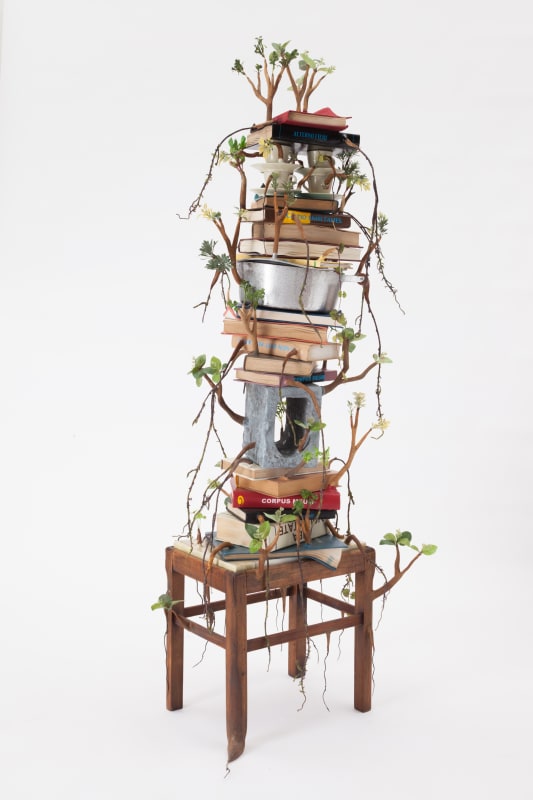Identity as a refusal
Identity is an ambiguous word that can refer to an idea of belonging as well as to the radicalization of its expressions. Throughout the 20th century, many authors debated its meanings, indicating something subjective, constructed, that it carries. Stuart Hall was one of them. In The Question of Cultural Identity (1996), the author discusses identity as a process in constant update. “There is always something ‘imaginary’ or fantasized about its unit. But it always remains incomplete, always in ‘process’, always ‘being formed’, says Hall.
In effect, the view of identity as an experience in constant motion is precious to many of those who have their lives built in the midst of their movement among different cultures and continents. Among references, memories and affections that do not fit into only one language, the works of Camille Kachani seem to emerge from situations of this nature. Born in Lebanon to Syrian refugee parents who immigrated to Brazil in the 1970s, Kachani has his life affected by the three major monotheistic religions of the contemporary world: Islam, Judaism and Christianity. The artist’s closeness to beliefs generated from the same matrix – that are often opposed to one another – is translated into the refusal of adherence to any one of them, making it possible to state them as reminiscences in constant update. Paradoxically, it is this refusal itself that makes the artist tackle, albeit involuntarily, the notion of belonging in his works.
Roots that spread vertically and horizontally (not always in search for the soil) adhere to the writing – an indispensable element in many of his compositions. In an allusion to the organic matter that will never be motionless, they indicate the inevitable passage of time, contrary to everything that aims to shorten it or to freeze it. This vital and often imperceptible continuity refers to the way Kachani understands his own artistic practice. “It is in principle about a never-ending work-in-process”, he says.
Carriers of history, each one of the images evoked by the works presented in this exhibition invites us to navigate through a biography. “They are elements from the inside and the outside”, explains Kachani, pointing to the porcelains and grenades in one of his cabinets.
But what would this “inside and outside” be?
They are remains of Lebanon, which was about to enter one of the longest civil wars in history (1975-1990), reminding us that, as well as a teacup, weapons and debris were also part of the routine of its inhabitants. Intimate references to hard times, these objects can be seen as elements of compositions that refer to the political dimension inherent not only to public spaces but also to domestic spaces in society. As with the moviemaker Ziad Doueiri in his movie West Beirut (1998), the artist suggests that ideologies, alliances and competition don’t fully explain the daily lives of countries in conflict. Despite the war, they still love one another, celebrate and then carry on with the most humdrum activities in life.
Part of some recent research, the photography series displayed here is also set in this context. Twigs, leaves and vines evoke situations that represent the conflict of nature with the human condition. The forest, as well as a tree, provides the model of circular capillary that takes place in an individual’s life: roots that lead to twigs and fruits that will consequently grow their own roots. Once again, the (un)taking root and its never-ending symbology provide the key to the expansion of the meanings of Kachani’s works.
In the midst of dualities that neither exclude nor oppose one another, the artist puts us face-to-face with a series of unlikely connections. Maybe this is a way to remind us that our own narrative also carries filial identity to which we relate, but we didn’t even know how to refuse.
Sabrina Moura


